The 36 Aussie golf holes you must play at least once in your life.
“The ideal hole is surely one that affords the greatest pleasure to the greatest number, gives the fullest advantage for accurate play, stimulates players to improve their game, and never becomes monotonous.”
Of all the gifts given to golf by Dr Alister MacKenzie, this brief dissertation on what makes for a good golf hole is perhaps his most enduring and significant. Almost 100 years since the good doctor graced our shores, it is a superbly succinct way of summarising why a particular golf hole grabs our attention as golfers and keeps it every time we play it. No matter the par, the setting or where it comes in the course of a round, if a hole holds true to Dr Mackenzie’s philosophy it elevates the golf experience to a place of pure joy.
We are blessed with hundreds of such holes in Australia but these three dozen are the ones you must experience at least once in your life. You’ll never forget them.
Coastal
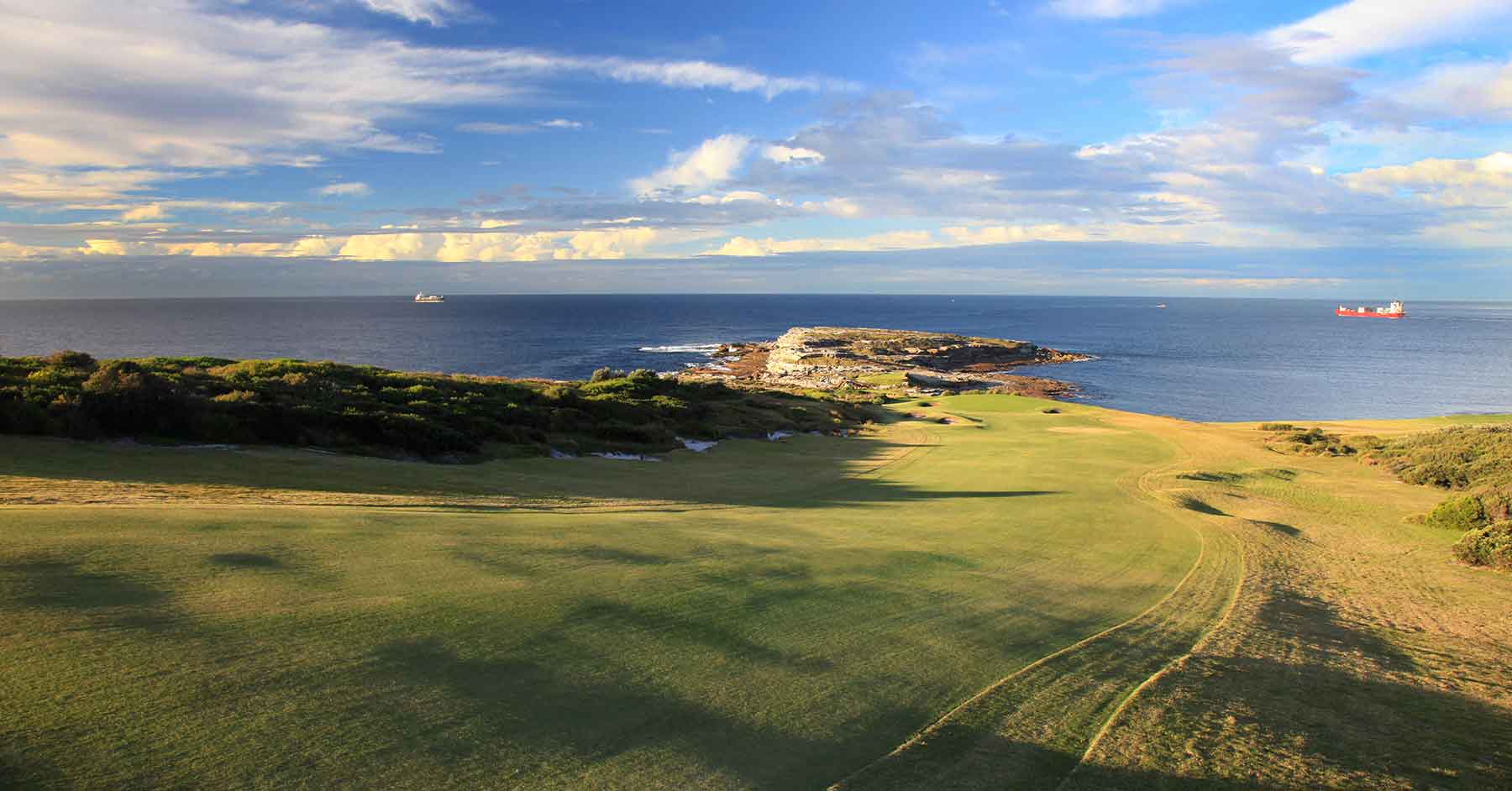
5th, New South Wales Golf Club
The scorecard tells you that the fifth at New South measures just 468 metres from the back tee; what it doesn’t show, however, is the roller-coaster journey you must traverse to complete it. Whether you can reach the crest at the 229-metre mark is wind-dependent but once you do a magnificent vista across Botany Bay opens up before you. You can fly the ball onto the green or run it up through the front apron and when you’re finished, the walk to the par-3 sixth awaits.
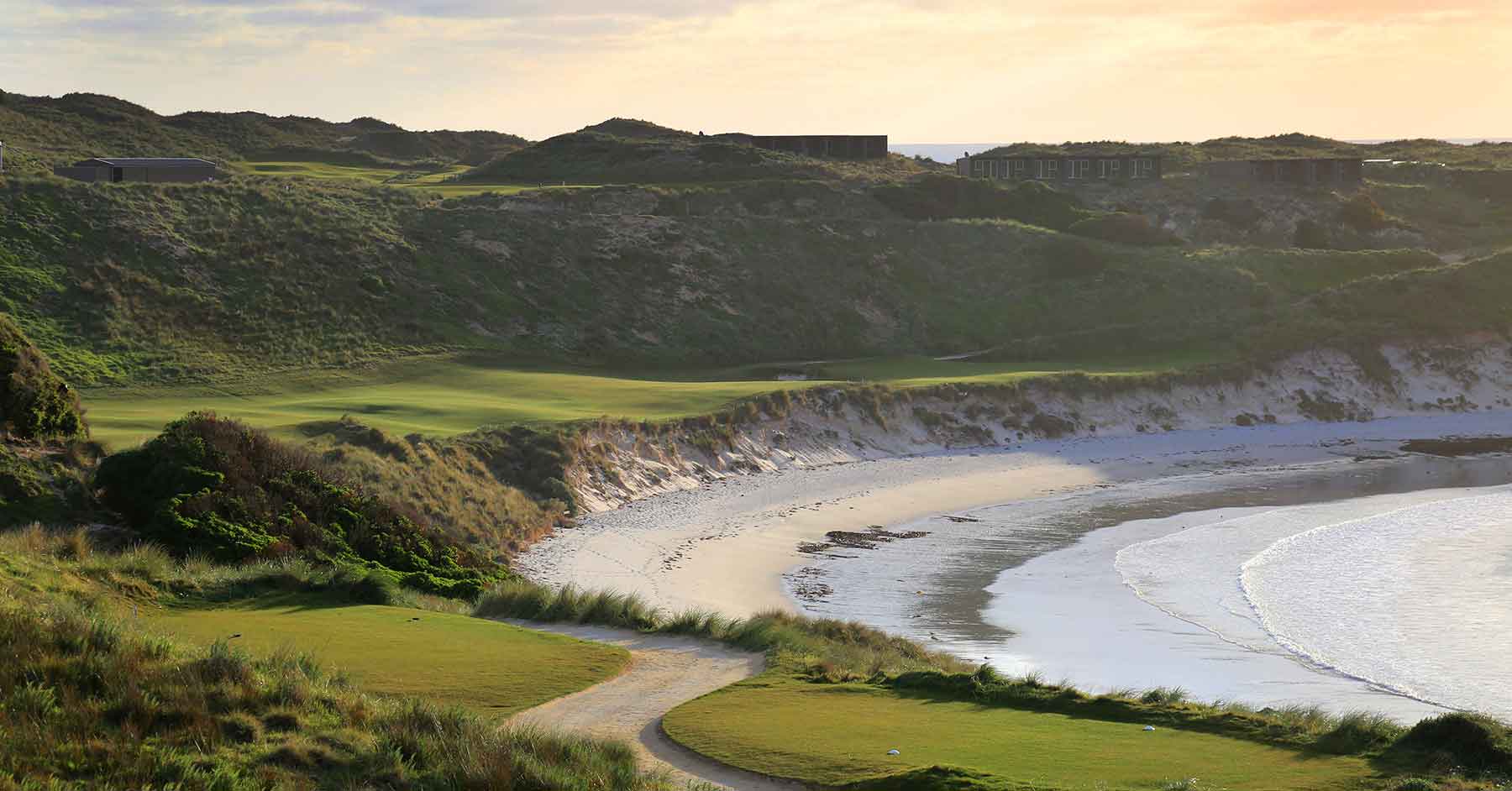
18th, Cape Wickham Golf Links
Part of the magic of playing the 18th at Cape Wickham at the northern tip of King Island is the 17 holes that have come before it, but the 395-metre, par-4 closing hole stands as its crowning glory. Almost a mirror reflection of the 18th at Pebble Beach, Cape Wickham’s closer tempts you to cut the coastline with your tee shot… and with the option to play your way back up the cliff face if your golf ball gets beached on Victoria Cove. It is quite simply epic.
16th, Hamilton Island Golf Club
Given the elevated nature of many of the tees at Hamilton Island Golf Club in the glorious Whitsundays, jaw-dropping views are part of the package. Yet as you reach the tee at the 160-metre, par-3 16th, the wonderment of this extraordinary accomplishment smacks you fair in the face. It is simultaneously awe-inspiring and terrifying. Any shot long is lost and the picturesque passage of waterway waits to the right. You may never be so happy to land in a pot bunker than the one that sits short and right of the green.
12th, The Cut Golf Course
Like most holes set along our expansive coastline, the way you approach the 400-metre, par-4 12th at The Cut south of Perth depends very much on the direction and strength of the wind on the day. Long hitters will be tempted to use a breeze at their back to play right of the sand dune that sits off the right side of the fairway, while a conservative line is available down the left. A narrow green perched at the edge of a sheer drop makes for a daunting approach shot… even a relatively short pitch must be played with the utmost care.
14th, Barnbougle Lost Farm
Both Barnbougle courses are blessed with tantalising short par 4s and the 14th at Lost Farm is among the very best of them. It plays just 251 metres downhill yet it challenges you to make good decisions with every shot. You want to blast away and reach the green, a tightening fairway and gnarly scrub on both sides prompting a moment of pause. Lay up off the tee and an approach shot to a green not much deeper than the width of a cricket pitch awaits, steep drop-offs on either side bringing bogey or worse into play for those who falter. With Bass Strait as its backdrop, it’s close to the perfect short 4.
14th, Port Fairy Golf Links
While the par-5 12th plays directly alongside Port Fairy Bay, the 408-metre, par-4 14th tempts you to hug the large dune to the right of the fairway to shorten your approach to the bunkerless green in the distance. Playing straight towards the Southern Ocean in south-western Victoria, players can choose to run the ball onto the green in strong winds or carry their second shot all the way to the putting surface if conditions are more benign. Just one of a number of spectacular holes at what may be the best-value golf course in the country.
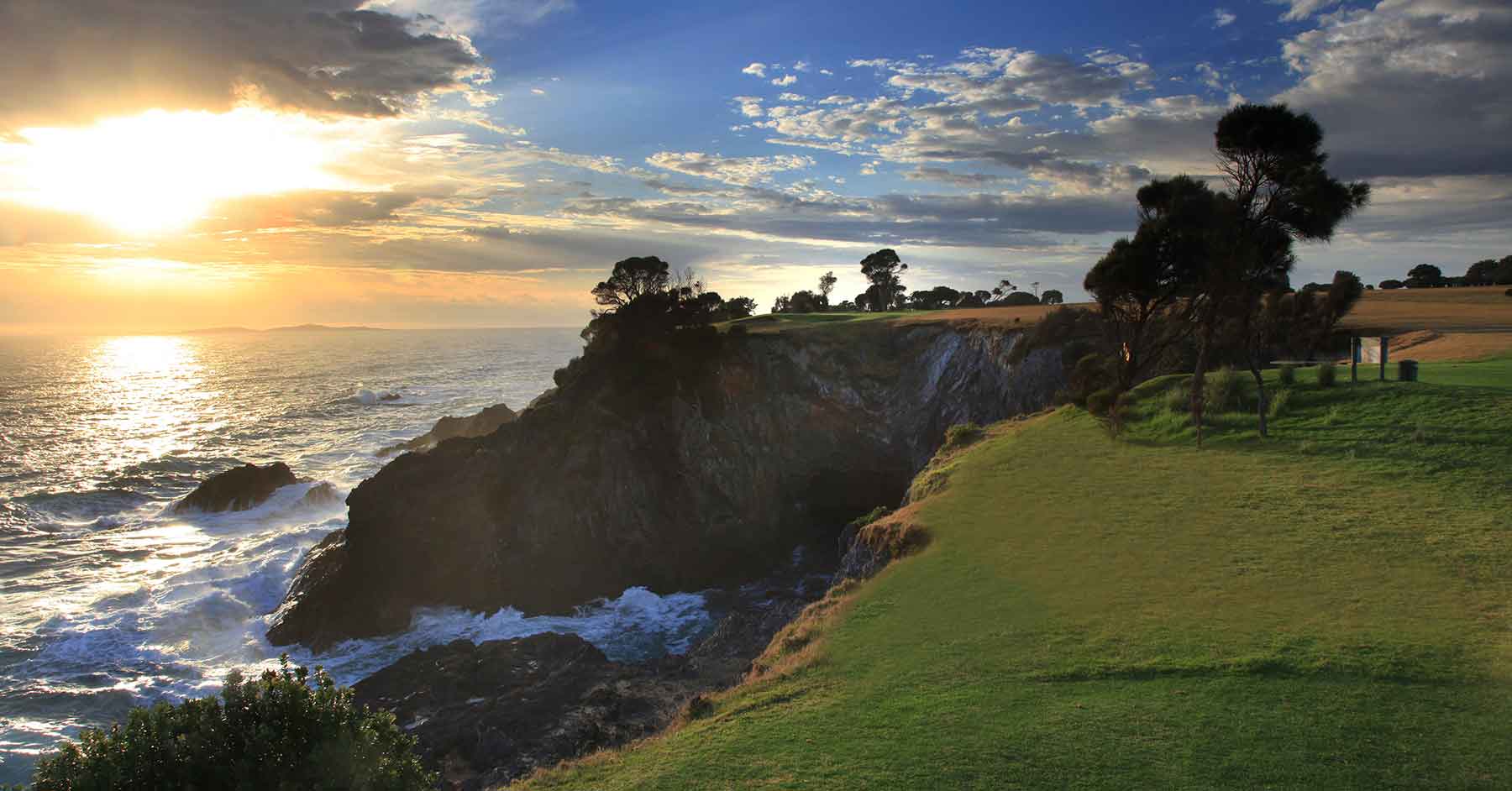
3rd, Narooma Golf Club
Any time you are faced with the prospect of missing Australia with a short iron, how your swing holds up under pressure is about to be tested. Coming after the equally enticing par-4 second, the third at Narooma on the New South Wales South Coast is famous not only for once hosting Paul Hogan on a commercial shoot but for the carry from one clifftop to the next. Short or left of the target 141 metres away and you have donated your pill to the Pacific Ocean, play to the right and you’re left with a nerve-jangling pitch to the putting surface. It’s a tee shot you will want to hit more than once.
Classic
5th, Royal Melbourne Golf Club (West)
The opportunity to play the only hole at Royal Melbourne built under the direct guidance of Dr Mackenzie and regarded as one of the great par 3s on the planet? If you get it, grab it. From the best players Australia has produced to the foremost golf-course architecture aficionados, the 161-metre, par-3 fifth is hailed for both its beauty and treachery. “It’s so important to hit the right club, especially if the pin is at the front. If you miss in the wrong spot, you’re cactus,” Aaron Baddeley told us in 2019. It is the epitome of a great Australian golf hole.
7th, The National Golf Club (Moonah)
Greg Norman has done so much to shape the course of Australian golf; his design work in partnership with Bob Harrison is just as significant as his playing career. A signature of many of Norman’s designs is the emphasis on driving the ball well and the open expanses afforded by the Cups region on Victoria’s Mornington Peninsula added a new element to their repertoire. The 482-metre seventh is the pick of a wonderful collection of par 5s on the Moonah course, its winding nature leading to a narrow green tucked into a pocket of the dunes. It’s a thrill ride from start to finish.
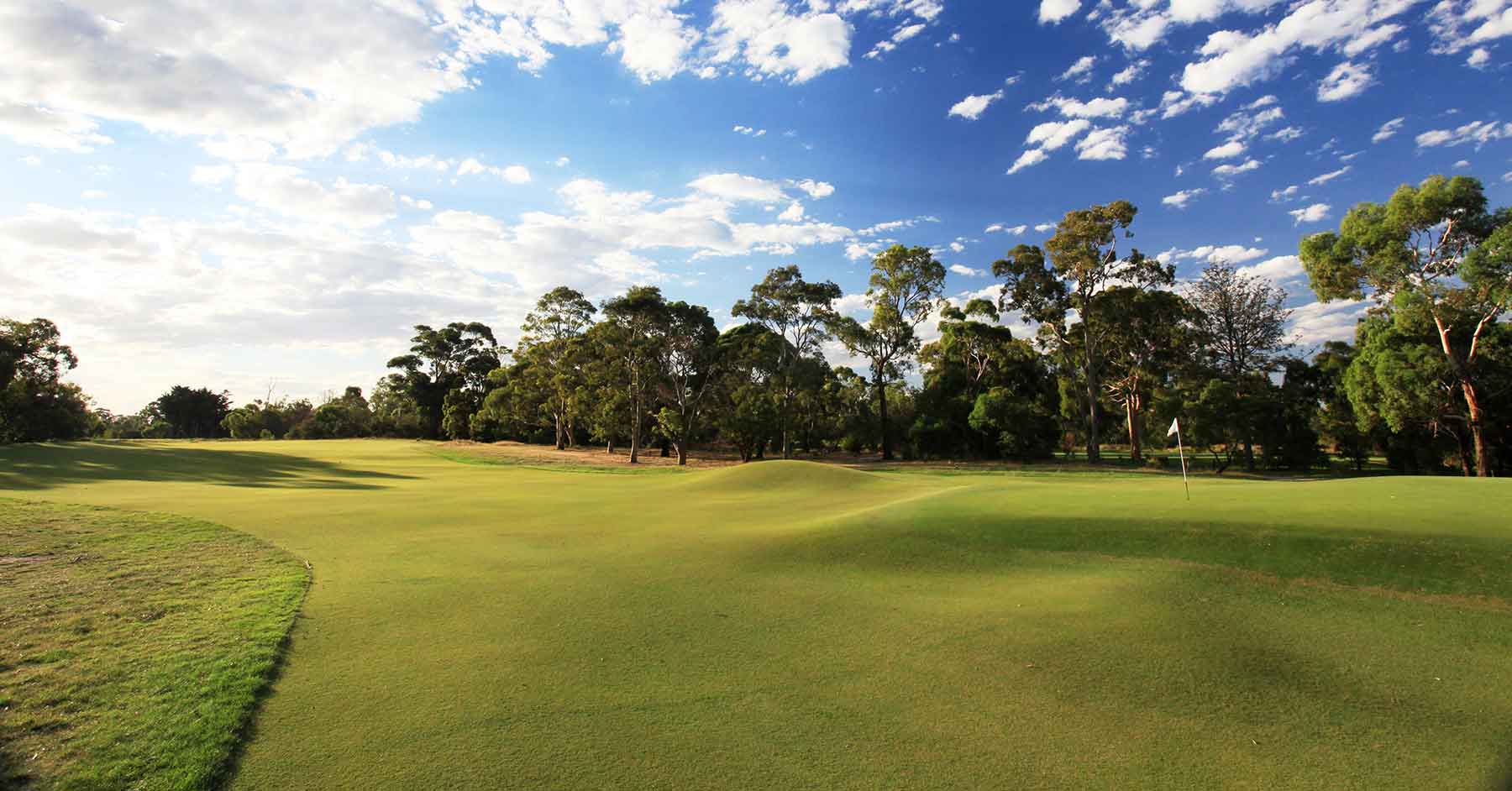
4th, Woodlands Golf Club
It stands as the subtlest slayer of scorecards in the country. It all looks so simple standing on the tee at the 251-metre, par-4 fourth at Woodlands in Melbourne. It’s short, there’s no sand and seemingly no reason not to go on the offensive. Designed more than a century ago by JD Scott and Rowley Banks, it is the hole that time forgot yet it is just as cunning now as when it was first played in 1913. The perched green rejects any approach not executed to perfection and torments those who find themselves pitching from one side to the other. You’ll walk to the fifth hole either wondering what all the fuss was about or with your tail well between your legs.
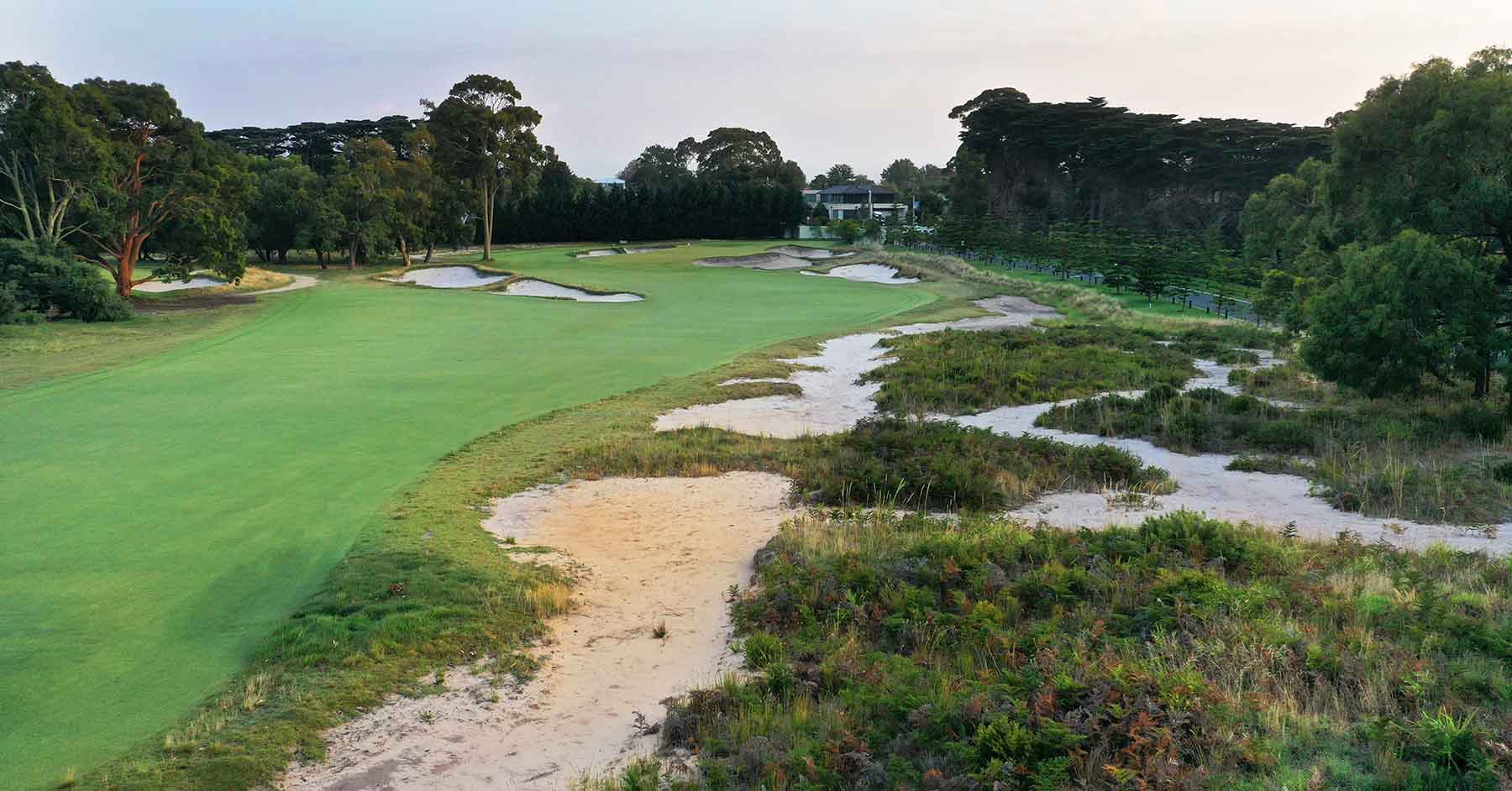
1st, Victoria Golf Club
There’s a lot to be said for opening holes that set a tone for the rest of the round and few do it better than the first at famed Victoria Golf Club. At just 233 metres, it is a hole you would attack if it fell anywhere else in the round. But how confident are you in your first swing of the day? Can you thread the needle with driver or 3-wood up onto the green? If you lay up, is your wedge game sharp enough hit the mark first up? “Avoid the bunkers at all costs,” says Geoff Ogilvy, a club member and part of the design team that carried out the course’s recent renovation. It’s sage advice for the first hole and the 17 that follow.
18th, The Australian Golf Club
In a game that treasures its history, the chance to walk in the footsteps of greatness is one to savour and the roll call of champions to have won the Australian Open at The Australian Golf Club is a rich one. From the very first Australian Open won by Michael Scott in 1904, iconic names of the past such as Joe Kirkwood Snr, Fred Popplewell, Eric Cremin and Kel Nagle have claimed the Stonehaven Cup at The Australian’s par-5 closing hole. In more recent times Jack Nicklaus, Greg Norman and Jordan Spieth have triumphed at ‘The Aus’ and everyone who plays the Nicklaus design stands on the 18th tee imagining they need to make par to win the Australian Open. With water fronting the green, it’s not as easy as the pros make it look.
12th, Royal Queensland Golf Club
A site once admired by Dr MacKenzie – “it is full of minor undulations of a somewhat similar character to famous seaside courses like St Andrews” – Mike Clayton’s redesign transformed Royal Queensland into a course that is forever asking questions. That is perhaps never more evident than at the 292-metre, par-4 12th. The tee shot provides a narrow channel left of the fairway bunker for long hitters to play up just short of the green but there is also the alternative route to the wider part of the fairway and a short iron or wedge onto a green with very distinct sections. Planning and execution are both critical to success.
11th, Lake Karrinyup Golf Club
Uphill par 5s in excess of 500 metres can often be a tough slog, but the 506-metre 11th at Lake Karrinyup in the Perth suburbs forces you to engage the brain from the first shot until the ball drops into the cup. A central fairway bunker requires the player to choose a left or right path and from there it is a matter of placing your second shot either short of the bunker on the left or taking on the right bunker for a shorter pitch shot to the green. Where the pin is positioned should also influence the angle of attack. It’s a par-5 where length is only part of the challenge.
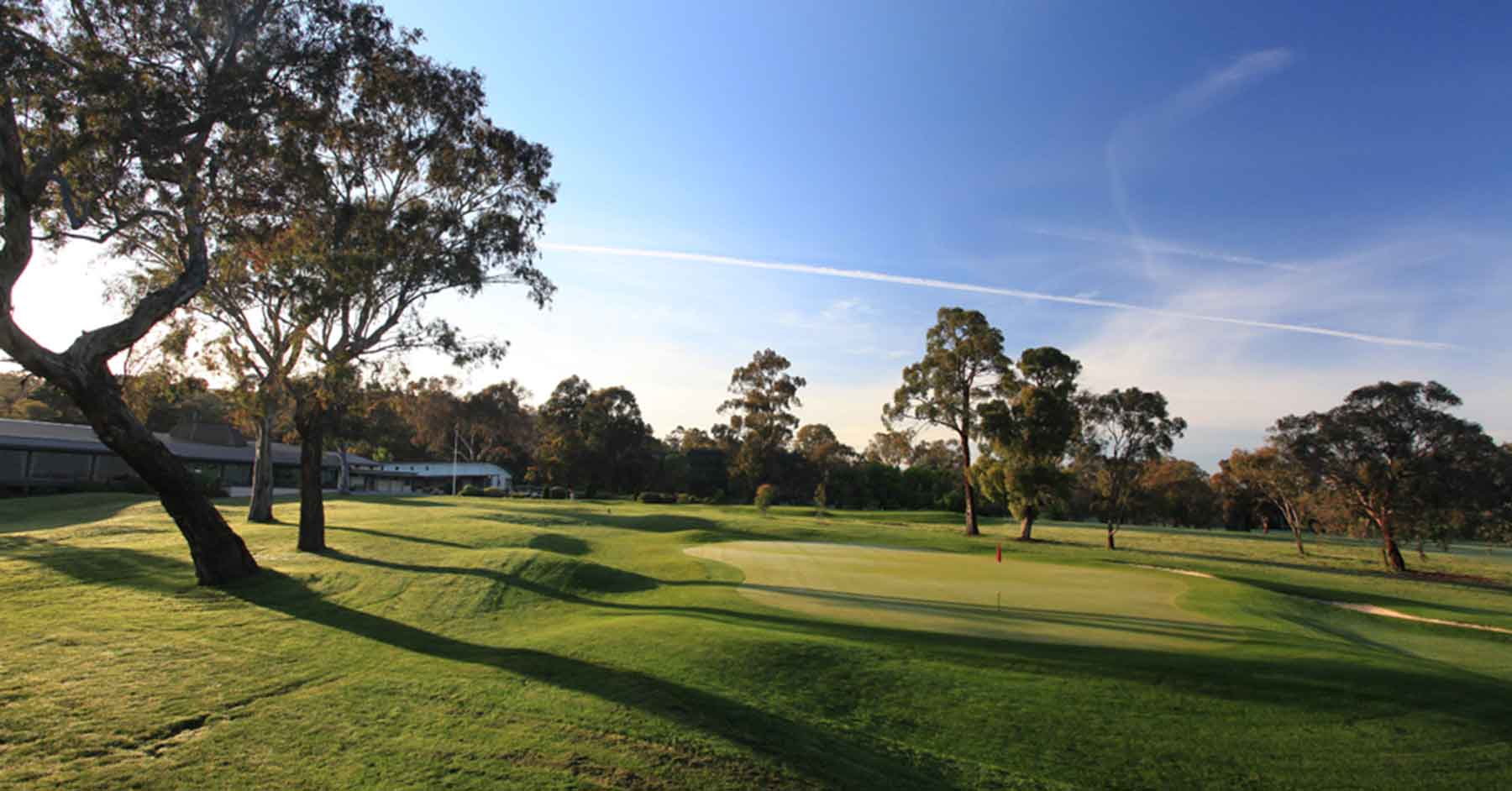
18th, Federal Golf Club
As host venue of one of amateur golf’s showpiece events, Federal Golf Club’s duty to identify the best young male and female players in the field carries through until the final hole. The first Federal Amateur Open set the tone with newly crowned US Amateur champion Nick Flanagan winning the inaugural event in 2003. Regarded as one of the most demanding holes in all of the ACT, Federal’s challenging closer is a dogleg-right par 4 of 385 metres played uphill until you reach the clubhouse. A strong tee shot leaves a lengthy second shot to an elevated green, so club selection and execution are equally important – exactly what you’d expect to round out a genuine championship test.
11th, The Lakes Golf Club
If there are holes you must play there are also shots you must hit, and the approach to the 11th green at The Lakes in Sydney’s eastern suburbs is one that has brought the world’s best unstuck. Famous for fleecing John Daly of six balls that forced him to walk from the course in the 2011 Australian Open, the lake that runs the length of the 528-metre par-5 is an ever-present danger, whether from a tee shot that leaks right, trying to position your second for an easier approach or missing the green either short or right. And if you bail out left, the shot from the greenside bunker demands a deft touch to also stay dry. A puzzle to be solved every time you play it.
15th, Kingston Heath Golf Club
A final-round birdie at Kingston Heath’s iconic par-3 15th hole was just one of many highlights of Tiger Woods’ 2009 Australian Masters victory. Playing to a back pin at the 142-metre, uphill classic, Woods hit his tee shot to six feet and promptly holed the putt, but for mere mortals finding anywhere on the green can be counted as a victory. With steep Sandbelt bunkering on either side of the narrow green there’s not a golfer who has stood on that tee and not thought of the carnage that may come from failure to find the putting surface. It’s a feeling every golfer should experience at least once.
Unique

10th, Bonville Golf Resort
Regularly referred to as the closest thing Australia has to Augusta National, if there is a hole that typifies the beauty of Bonville on the New South Wales North Coast it is the 456-metre, par-5 10th. The secluded tee frames what’s to come, the tee shot dictating how you choose to play it. From the back tee it is 266 metres to the end of the first fairway island and the closer you can get the more tempted you will be to go for the green in two. And like Augusta’s par-5 13th, there is a creek fronting the green ready for those who don’t get their ball all the way up to the elevated green. It’s a beauty and a beast.

10th, Sanctuary Cove Golf & Country Club (Pines)
Arnold Palmer was a fearless aggressor throughout his storied career and mere mortals need to channel that mentality when taking on the Pines course’s notorious par-4 10th. Regarded to this day as one of the toughest holes in the country, its length of 432 metres from the tips makes par hard enough but factor in a narrow fairway bordered by water down the right and a pine forest on the left and any 4 is well earned. Pat the bronze statue of Mr Palmer for good luck as you leave the ninth hole and take aim like Arnie would.

7th, The Vintage Golf Club
Golf in the Hunter Valley is often accompanied by a visit to a vineyard; if you’re not careful you can do both in one hole at The Vintage. The 507-metre, par-5 seventh begins with a blind tee shot over a rise that if navigated correctly can bound down towards the go-zone for longer hitters. It also hides Bimbadgen Estate to the left, its bountiful vines pushing all the way down to the left side of the fairway and serving as out-of-bounds for those who lose one left. For most, the approach shot into the green will be played from the lower section and demands precise wedge play to set up a shot at birdie. And a satisfying glass of red later in the evening.
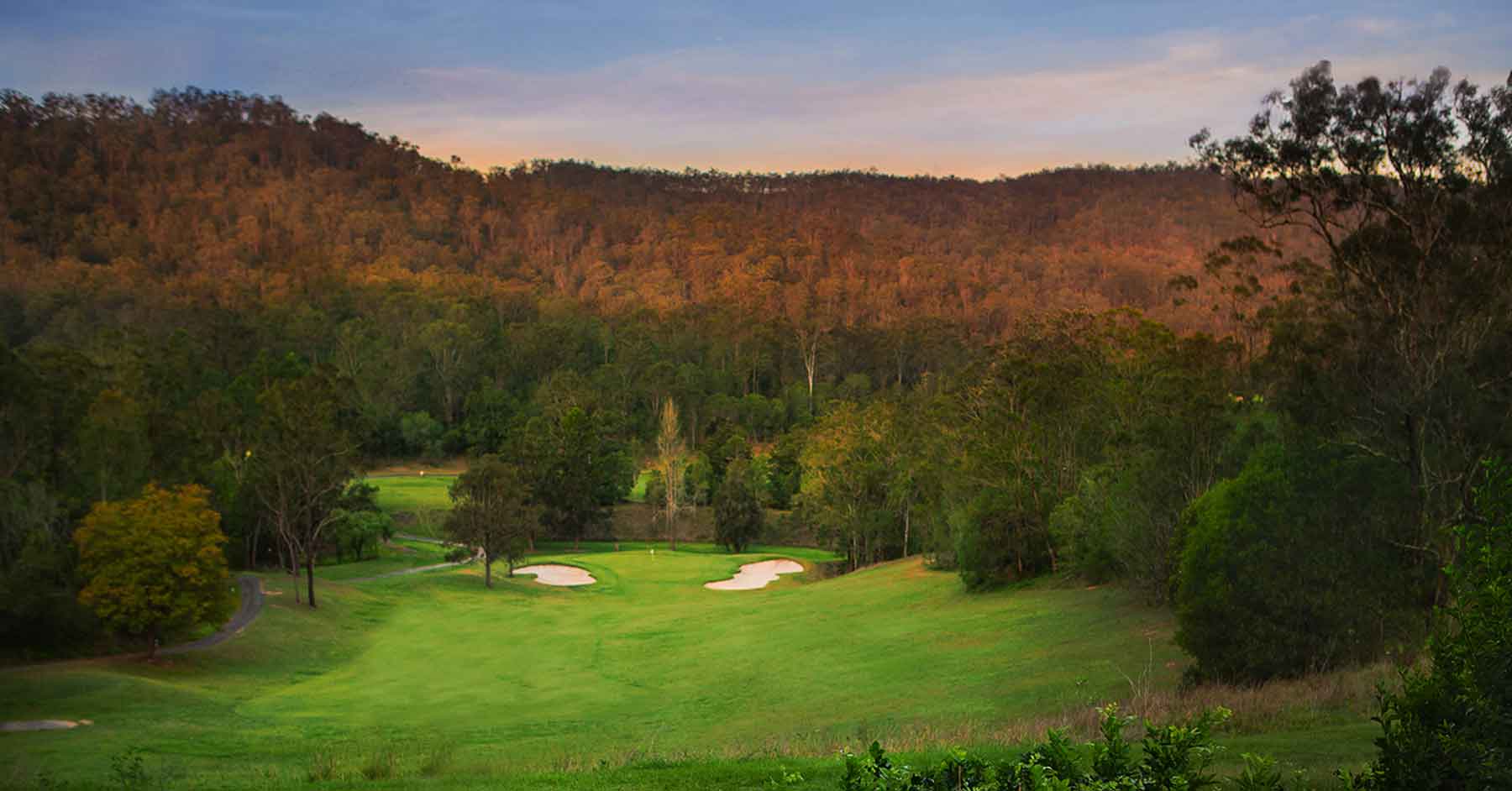
5th, Kooralbyn Valley Golf Course
Par 3s in excess of 200 metres are not generally the most popular among design buffs, but when they drop some 30 metres from tee to green it is a shot to savour. Kooralbyn Valley, west of the Gold Coast, has enjoyed a resurgence in recent years and Desmond Muirhead’s bold design is on full display at the 220-metre fifth. Given the dramatic elevation change club selection is a problem in itself, the distance giving way to gut instinct as to what you need to hit to get it there. And as the ball soars into the air and hangs there for an eternity you are still left wondering whether you have indeed made the right decision. Few playing a social round can resist hitting a second ball.
17th, Kalgoorlie Golf Course
If they ever build a golf course on Mars, it might look a little like the par-3 17th at Kalgoorlie. The Graham Marsh design – located in the town where he was born, no less – sits 600 kilometres east of Perth and has become the quintessential outback golf experience. Nicknamed the ‘Super Pit’, the 17th starts from a slightly elevated tee with the old tip to the left the only support structure to a green that appears to be floating in space. To the right is a steep descent to the red dirt that frames every hole at Kalgoorlie and which provides for an out of-this-world round of golf. “It is a stunningly beautiful moment late in the day to experience the sunlight shimmering on the canopy of the salmon gums that form the backdrop of this dramatic green site,” Marsh adds. A must-play indeed.
4th, Black Bull Golf Club
“You are now entering the Bull Ring.” No other golf course on the planet offers that experience and it comes early in your round at Black Bull on the mighty Murray River at Yarrawonga. The final Thomson Perrett design prior to Peter Thomson’s passing in 2018, Black Bull has featured in our past two rankings of the Top 100 Courses in the country but the highlight for many is the marketing gimmick that is pure genius. With imposing gates and Charlie the Bull to greet you upon arrival, the Bull Ring opens with a 179-metre par 3 that plays over water with bunkers to the right and left of the green. It’s not an easy shot to play after you’ve spent five minutes taking selfies, but it is the start of a three-hole stretch that is now among the highlights of playing golf along the Murray.
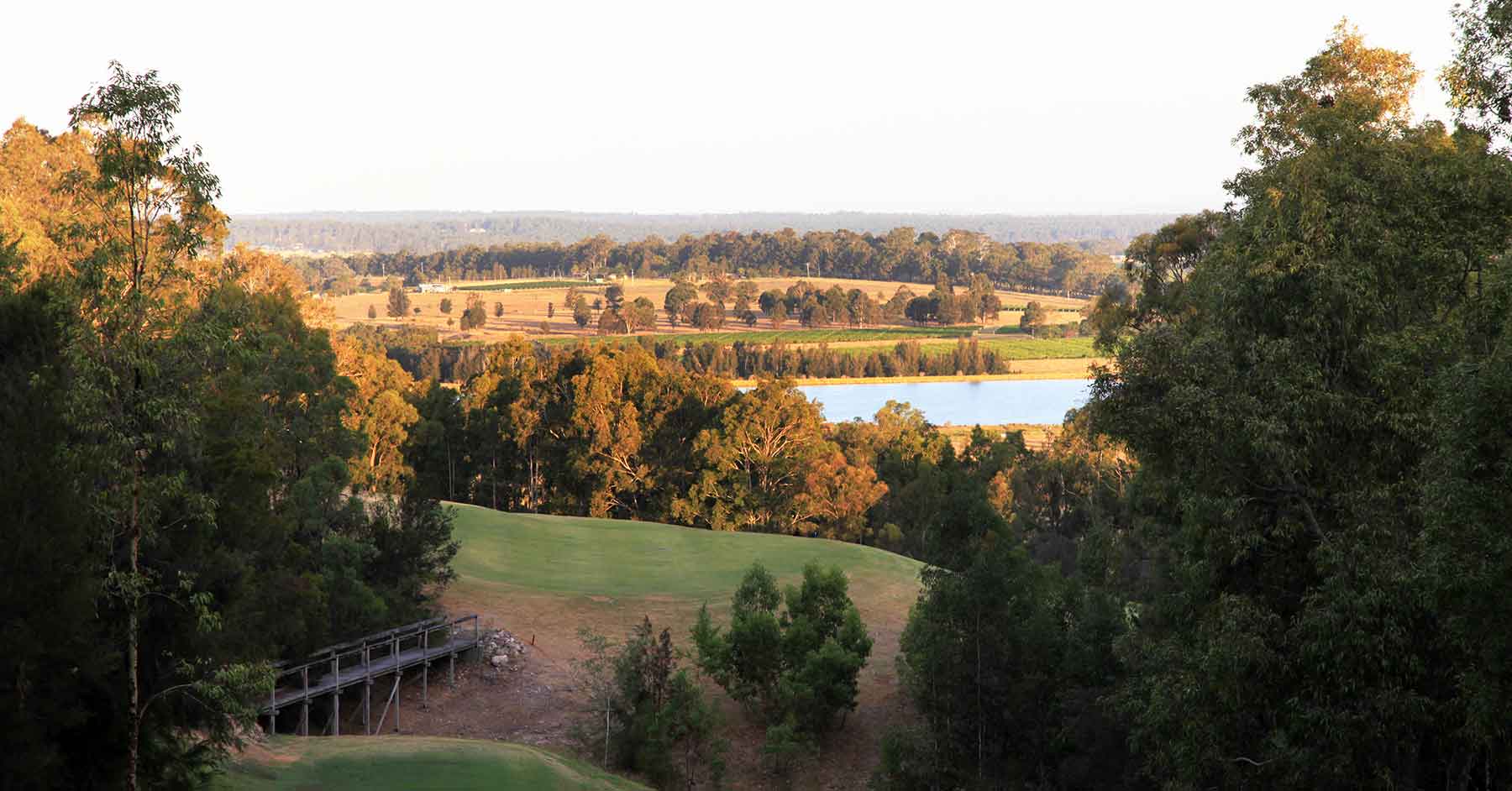
12th, Cypress Lakes Golf & Country Club
Every now and then you come across a tee shot that makes you question whether you possess the inner fortitude to execute what’s required of you. After you leave the back of the 11th green and drive around to the 12th tee at Cypress Lakes in the Hunter Valley, the enormity of the task at hand smacks you fair in the face. For first timers it looks like an almost impossible tee shot. Emerging out of dense Aussie bush, the fairway seems little more than a sliver of green in the distance, the lower tier of short grass obscured from view from the beginning of this 444-metre brute of a par 4. It’s a tough shot to commit to but those who do can make full use of the slope to be left with a mid-iron into a green that falls away towards bunkers and rugged brush on the right. Over the years it has been a controversial hole (one that was even converted into a long par 3 for a time), which is part of what makes it such a compelling hole.
4th, Brookwater Golf & Country Club
Step onto the tee at the par-5 fourth at Brookwater and you are in no doubt that you are about to embark on a wild ride. Like that first descent from the apex of a roller-coaster, the tee shot is played from an elevated position that rewards the courageous prepared to send their ball into orbit down the right side of the fairway. What goes down must go up, and from the gully that splits the fairway it is a steep climb to a green that sits on an angle from the front-left to back-right. Reaching the green in regulation demands three of the best shots you can muster.
1st, Ratho Farm
If you have a sense of history, then your Australian golf education is not complete until you have played Ratho Farm at Bothwell, less than an hour north of Hobart. Golf was first played at Ratho Farm in 1822 by the Reid family and remains Australia’s oldest golf course and the oldest outside Scotland. In recent years Neil Crafter and Paul Mogford have built new holes to give Ratho a complete 18, but nothing sets the tone better than the par-3 first. If hitting across stockyards to a green surrounded by a fence to keep the sheep at bay doesn’t transport you to a different time in history then perhaps a Delorean is more your style.
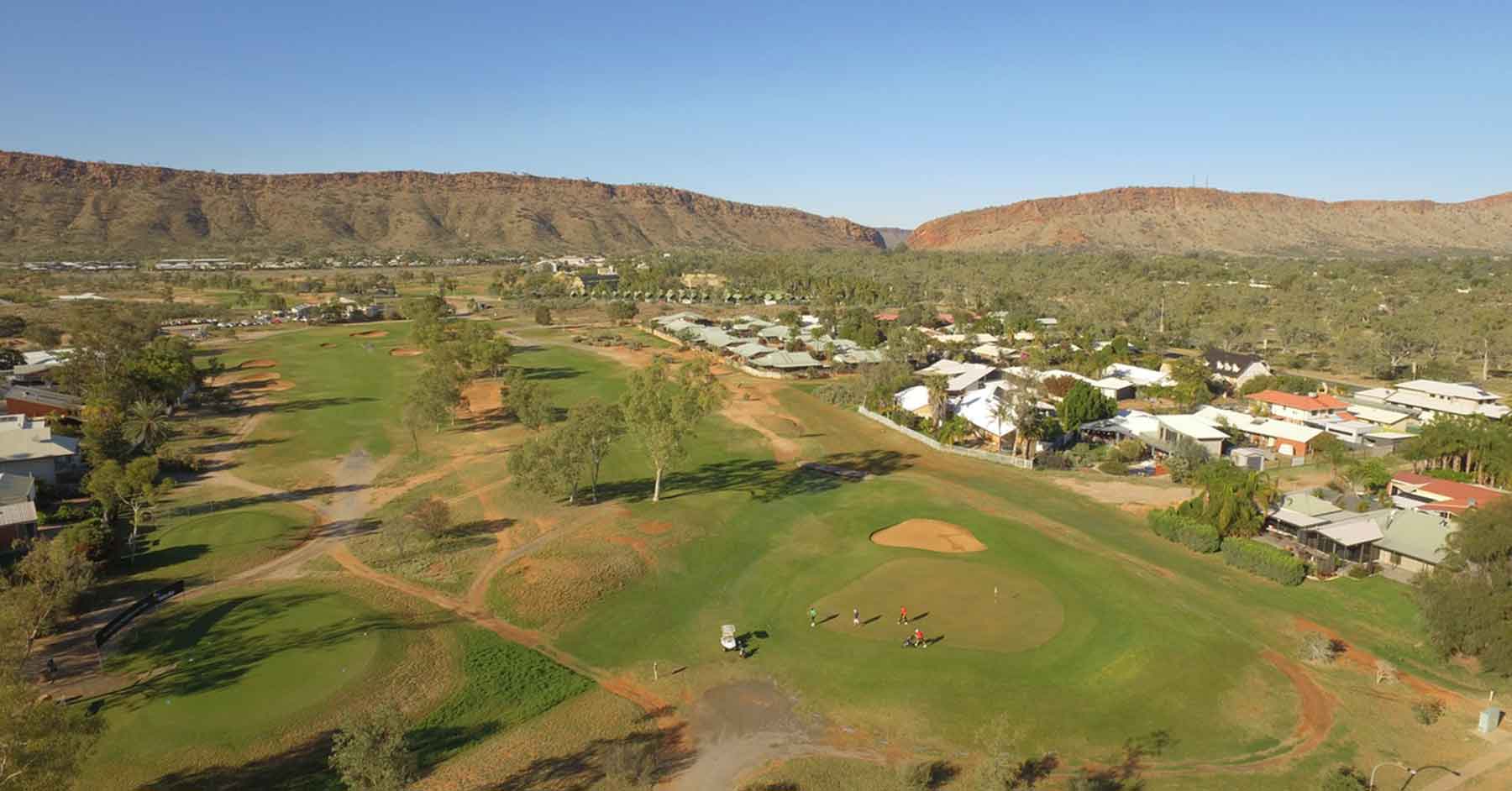
8th, Alice Springs Golf Club
How could you not want to play a golf course that upon its opening in 1985 hosted the “Fosters Challenge”, pitting our rising star Greg Norman against American great Johnny Miller. That exhibition gave Alice Springs Golf Club the early exposure it needed and ensured enough golfers experienced the Thomson-Wolveridge layout that was a perennial Top 100 inclusion up until 2016. The 386-metre, par-4 eighth is just one example of holes that weave through rocky outcrops and use the stunning MacDonnell Ranges as its backdrop. Located five hours from Uluru, it stands as one of our most historically significant golf courses.
Short and sweet
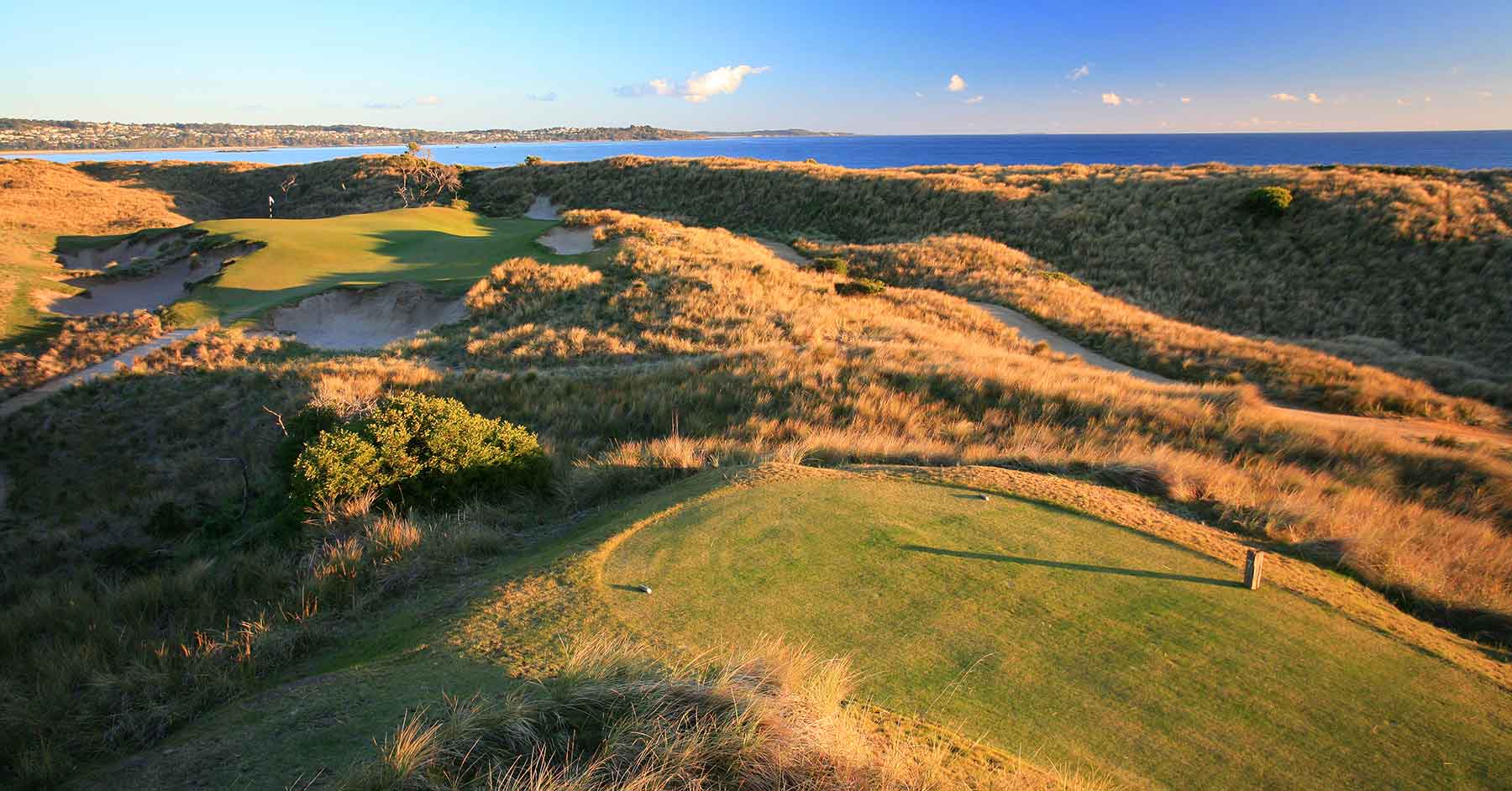
7th, Barnbougle Dunes
With respect to Sandbelt classics played in a raging nor’westerly wind, the seventh at Barnbougle Dunes is the most terrifying short shot in Australia. Just 112 metres in length, it is the exposed plateau masquerading as a target that can bring the best golfers to their knees. The landing area is so small that you can’t help but look at the potential disaster at its surrounds, bunkers left and right and a dramatic drop-off for any shots that travel too far. Throw in some wind and this just might be the most satisfying 3 you can make.
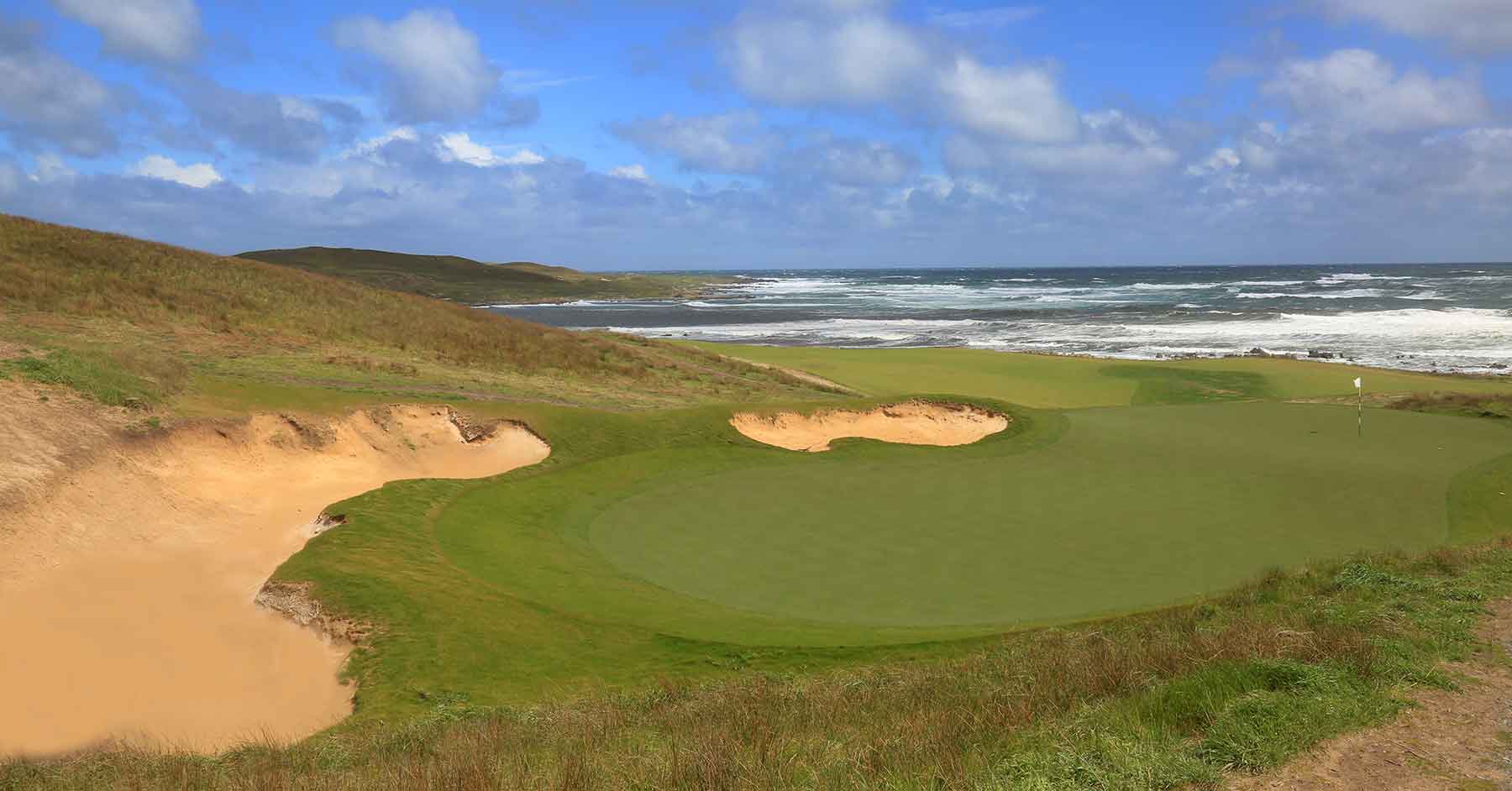
14th, Ocean Dunes
A mate of mine once played this 116-metre par-3 with a half-punch 5-iron. If that doesn’t appeal to your shot-making senses then you may not have any. I watched a pitching wedge sail high into the Tasmanian sky and held my breath waiting to see if it would reach the green below (it didn’t). Playing west towards Bass Strait, wind will always be a factor and club selection a conundrum every time you play it. Add that to the fourth hole that plays across a cove, and Ocean Dunes possesses a collection of par 3s that will live long in the memory.

16th, Thirteenth Beach (Beach)
Course architect Tony Cashmore’s harnessing of the wild sand dunes is a highlight at Thirteenth Beach’s Beach course. The layout moves into the rich landscape from the par-4 fifth hole and reaches its crescendo at the par-3 16th, emphasising again how the shortest holes are capable of doing the most damage. On a still day you’re aiming a wedge at a putting surface that looks no bigger than a snooker table; play it in any wind whatsoever and bunkers and steep slopes quickly enter your periphery.
15th, Magenta Shores Golf & Country Club
When it first opened, course designer Ross Watson referred to Magenta Shores on the NSW Central Coast as his Mona Lisa and the par-3 15th his tribute to the game’s British traditions. Measuring just 124 metres at its maximum, the 15th draws inspiration from Royal Troon’s iconic ‘Postage Stamp’ and plays directly towards the ocean, a southerly or nor’easter dramatically changing the nature of the hole.
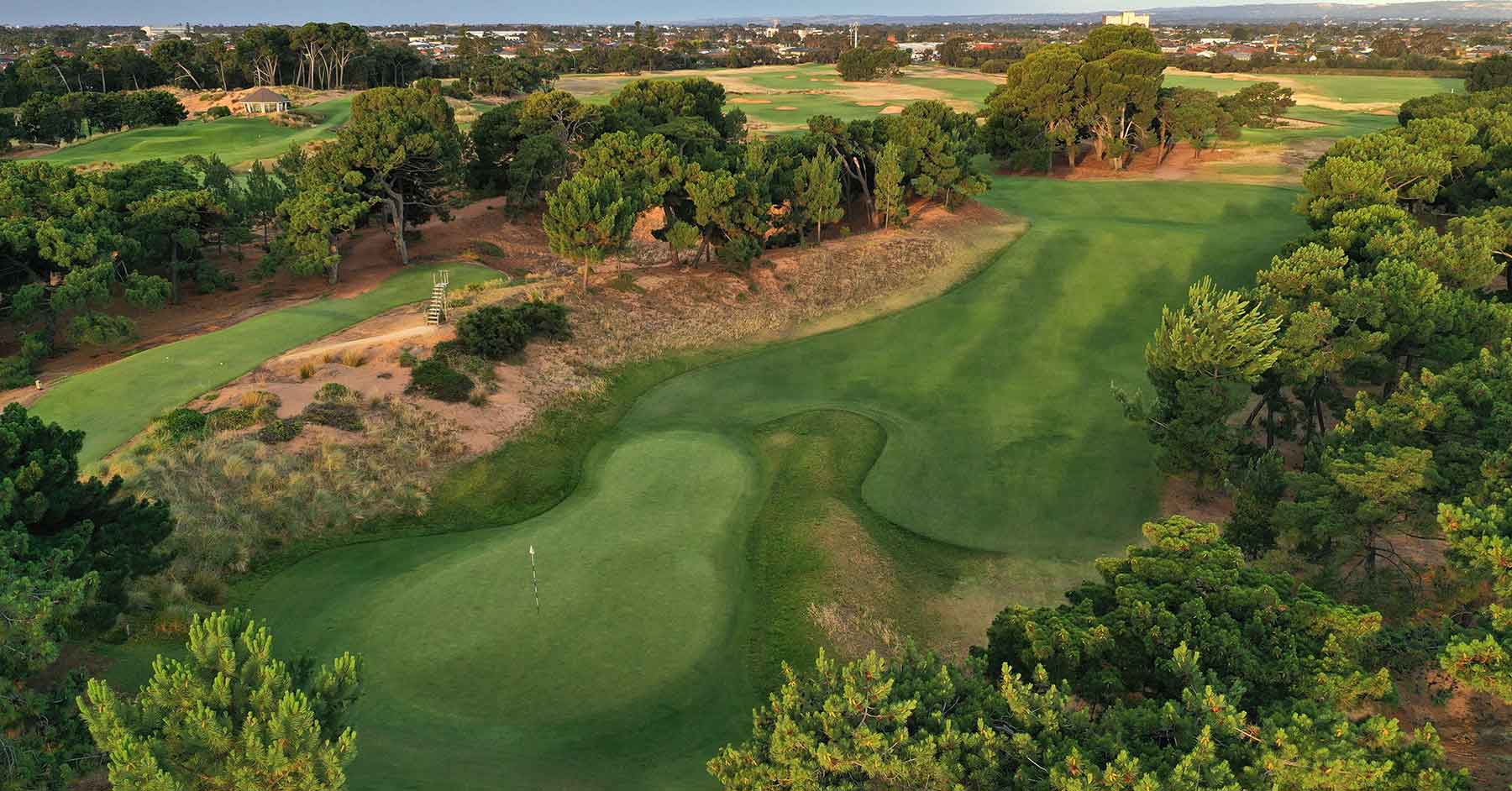
3rd, Royal Adelaide Golf Club
The influence of Alister MacKenzie travelled to Adelaide and his greatest gift was the 269-metre, par-4 third. Although the club did reject a number of Dr MacKenzie’s proposals, the decision to implement his ideas at the third left the club with one of world golf’s truly great short par 4s. Without need for the use of a bunker, MacKenzie’s exquisite green placement abutting a sand dune necessitates perfect execution for those taking it on, the less adventurous able to play to the left of the fairway and play across a grassy knoll to reach the green. It’s a hole you’d love to play every day of the week and twice on Sundays.

17th, Links Hope Island
You wouldn’t call it a classical Peter Thomson hole, but the par-3 17th is the one that everyone who plays Hope Island remembers. The Thomson Wolveridge Perrett design has been a Gold Coast favourite for more than two decades and the penultimate hole has turned many a match on its head. Stretching to 224 metres from the back tee, it is water carry almost the entire way, with those who doubt their ability to get it there given the option to play wide to the right and pitch and putt for their par.
4th, Maroochy River Golf Club
Queensland’s Sunshine Coast has little in common with Scotland, yet the open expanses at Maroochy River offer travelling golfers an experience more closely resembling golf’s birthplace than the resort courses that surround it. Flight paths into Maroochydore Airport meant tree-planting was not an option at the barren canefield site but as the par-3 fourth shows, wind can be harnessed as a hole’s greatest defence. Playing directly towards Mount Coolum in the distance, the fourth plays 130 metres at its extreme and the large green looks almost impossible to miss. Yet there is every chance that before you play your tee shot your final thought will be, I hope this is the right club. And often, it won’t be.
2nd, St Andrews Beach
At 279 metres, the second at St Andrews Beach on the Mornington Peninsula is one of the shortest par 4s Tom Doak has designed and, according to the man himself, one of his best. Doak identified a blown-out sandy crater early in his inspections at St Andrews Beach and decided it would be best used as a frame of reference for a short 4. A central fairway bunker torments those eyeing off a conservative approach, while a right-to-left shot shape for the more aggressive is ideal to edge towards the front of the green. Don’t overdo it, though.
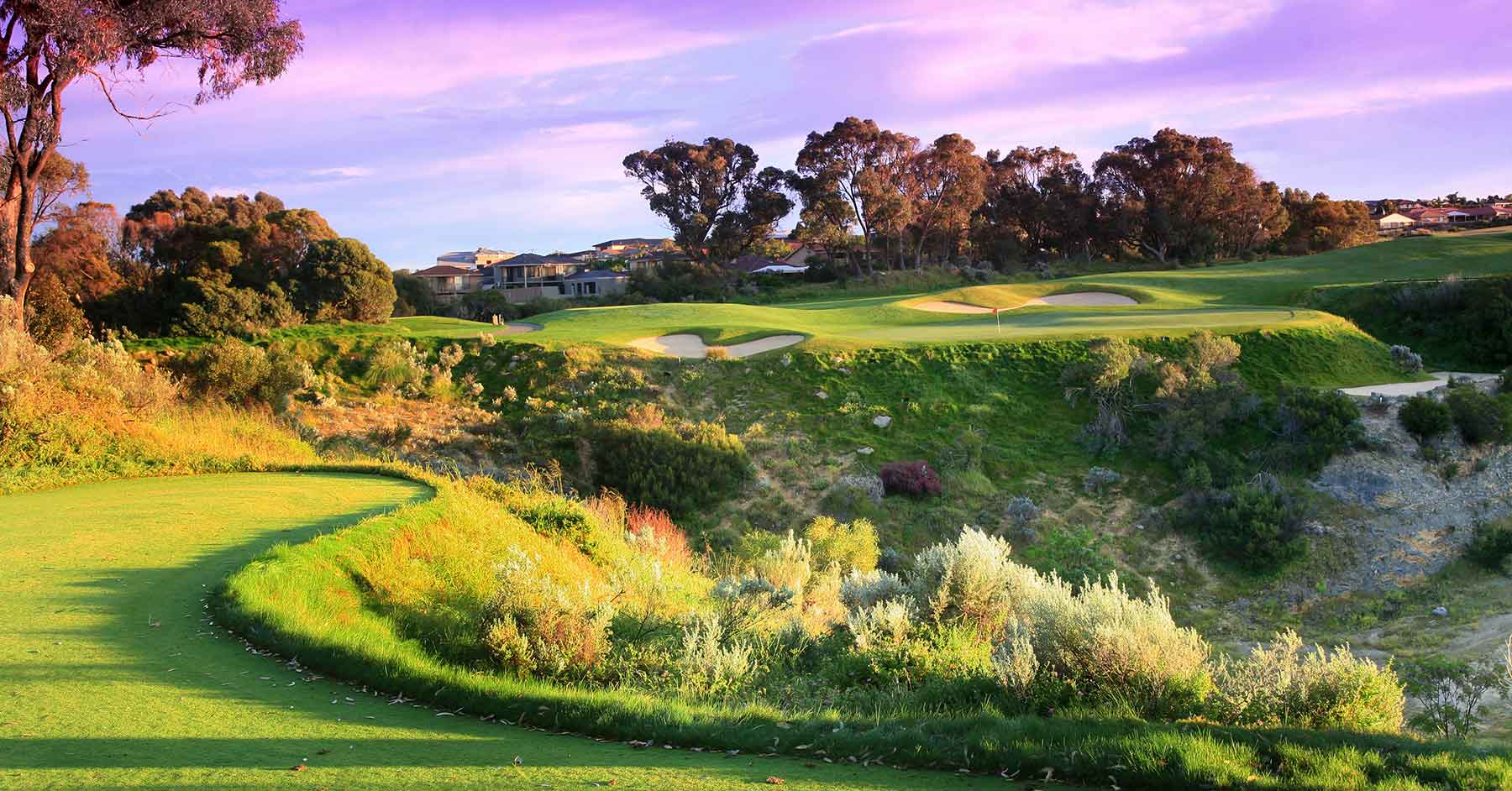
3rd, Joondalup Resort (Quarry)
It’s not a stretch to suggest there’s no other tee shot in the country quite like the par-3 third hole of the Quarry course at Joondalup Resort in Perth. Using the former limestone quarry site to its most dramatic effect, Robert Trent Jones Jnr positioned the putting surface perilously close to the edge of the quarry, the bunker that hugs the right side all that can save a flared tee shot from finding the quarry floor. And even if you do hit the green some 136 metres away, you’ll be tempted to hit a second ball, just for fun.




